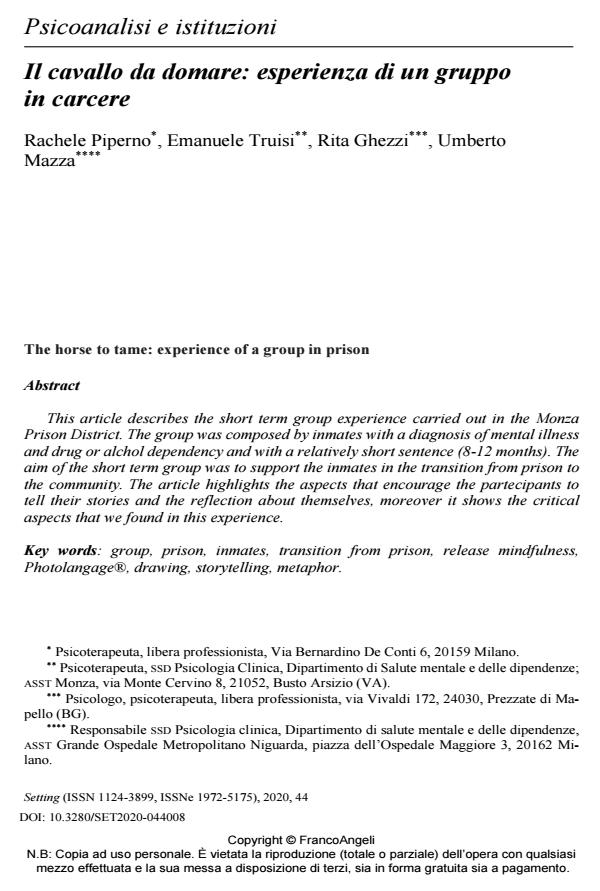The horse to tame: experience of a group in prison
Journal title SETTING
Author/s Rachele Piperno, Emanuele Truisi, Rita Ghezzi, Umberto Mazza
Publishing Year 2021 Issue 2020/44
Language Italian Pages 14 P. 151-164 File size 300 KB
DOI 10.3280/SET2020-044008
DOI is like a bar code for intellectual property: to have more infomation
click here
Below, you can see the article first page
If you want to buy this article in PDF format, you can do it, following the instructions to buy download credits

FrancoAngeli is member of Publishers International Linking Association, Inc (PILA), a not-for-profit association which run the CrossRef service enabling links to and from online scholarly content.
This article describes the short term group experience carried out in the Monza Prison District. The group was composed by inmates with a diagnosis of mental ill-ness and drug or alchol dependency and with a relatively short sentence (8-12 months). The aim of the short term group was to support the inmates in the transition from prison to the community. The article highlights the aspects that encourage the partecipants to tell their stories and the reflection about themselves, moreover it shows the critical aspects that we found in this experience.
Keywords: Group, prison, inmates, transition from prison, release mindfulness, Photolangage®, drawing, storytelling, metaphor.
Rachele Piperno, Emanuele Truisi, Rita Ghezzi, Umberto Mazza, Il cavallo da domare: esperienza di un gruppo in carcere in "SETTING" 44/2020, pp 151-164, DOI: 10.3280/SET2020-044008